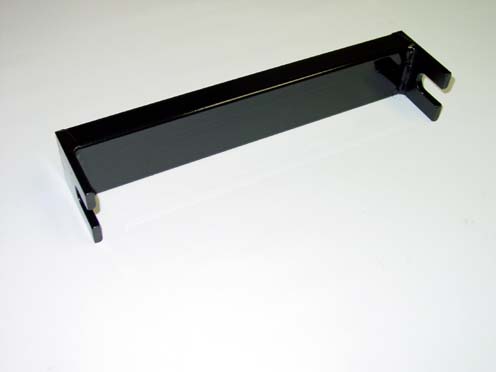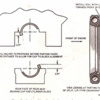quote:
1. Is it easiest to take engine and gearbox out together? What do they weigh? Anything special to be aware off?
Take them both out together. Here's a link to how to do it:
http://www.geocities.com/pantera_tech/EngineRnR_1quote:
2. What does an original Cleveland like this need? If it was a Chevy SB which I've restored many, maybe just a timing chain, oil pump and gaskets? I guess a Cleveland needs a harmonic balancer after reading these forums? What else? Please don't say total restoration if not needed Wink I don't drive on tracks, only the occasional blast around town or through Europe on unlimited highways but rarely above 130 mph. Engine has new intake (Edelbrock Performer), carb (Holley 600 vac), water pump and fuel pump.
It's hard to say without knowing the internal condition of the engine. How many miles does it have on it? At a minimum, assuming there is no internal damage or excessive wear, replace the following...
* Rod and main bearings
* Rings and hone the cylinder bores
* Valves and valve springs
* Timing chain and gears with a quality tru-roller timing set
* Cam (may be able to regrind current cam but a new mild cam should net better performance and economy)
* Lifters and pushrods
* All gaskets and seals
* Harmonic balancer (dampener) with a new SFI-approved unit
* Also, double-up the distributor shear pin that holds the gear on the shaft.
* Replace the stock oil pan with a properly baffled 10-quart pan from Aviad or Armando to protect your new engine
Here are some additional suggestions/upgrades if budget permits. You can do any or all of them:
* Upgrade to forged pistons, roller rockers, roller lifters
* Heads - Aussie 2V heads or aluminum heads for improved performance
* Stroker kit - There are a lot of popular options: 377, 383, 393, 408, etc.
quote:
3. What about the gearbox. That works perfectly as well. Any gaskets/seals that can be changed? If so, where can they be bought?
All the Pantera vendors sell gasket kits for the ZF. Or, you can call RBT transmission for them.
* Safety wire the ring gear (if it's not been done already) while the transaxle is out of the car.
* Replace the ring gear bolts. Again, all the vendors sell kits, or you can buy ARP bolts and drill them yourself (search this forum for more info).
* Replace gaskets to avoid leaks.
quote:
4. Any further advice?
While the engine is out...
* Remove the gas tank and have it boiled out and sealed.
* Address any corrosion on the inside of the quarter panel between the gas tank and the quarter panel. At a minimum, clean, prime and paint this area to protect it from corrosion.
It's also an excellent time to clean and detail your engine compartment. Now would be a good time to scrape off all the factory undercoating, smooth the spot welds, and paint or re-coat the engine compartment with a more durable (and easier to clean) bed-liner material. You can have this done or do it yourself with a kit (available from Eastwood and other sources).
Keep us posted on your progress!
Cheers!
Garth



